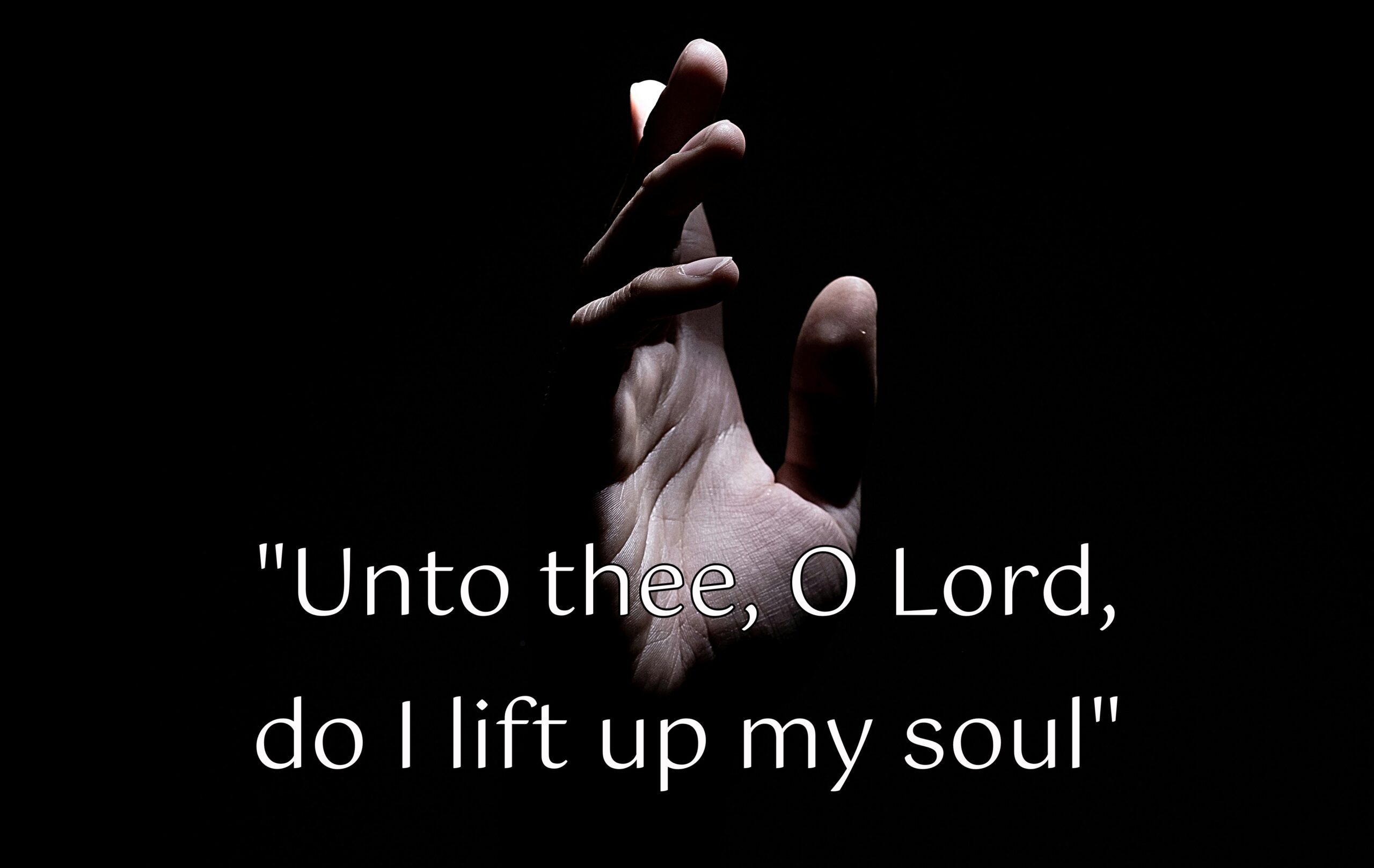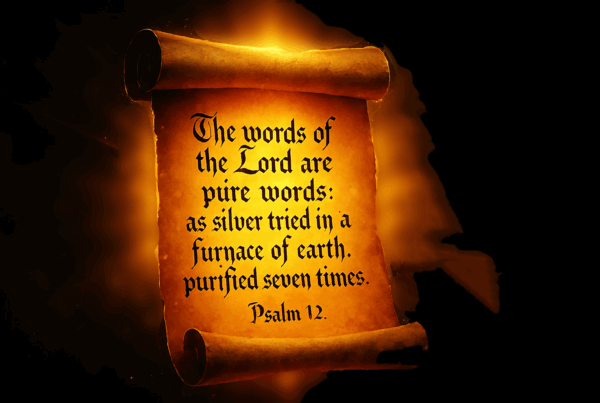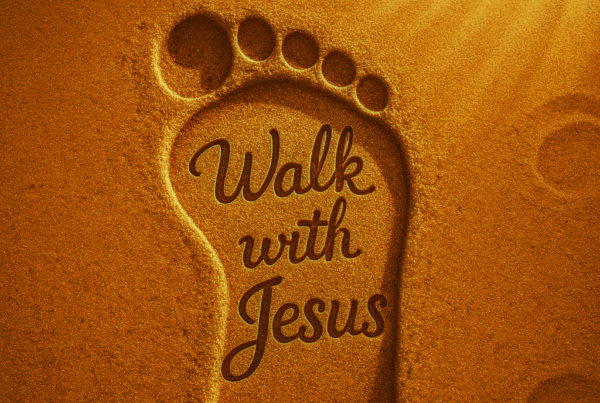PSALM 25 – ALEPH
Psalm 25 – ALEPH
“Unto thee, O Lord,
do I lift up my soul”
Psalm 25:1
ALEPH.* In this Acrostic Psalm (see Part Two) David is setting forth the posture of one who through the experiences of life has come to a place of total reliance upon his God for the keeping of his soul. Gone are the self-reliance and the zeal of his youth. The aged man has now learned the value and the truth of the Lord as his shepherd. The fickle soul of man must ever be lifted up unto God for safe-keeping.
The purpose of all our experiences in life brings us to the ALEPH of God; He is the Saviour and the Keeper of our very lives. These are more than mere words and must be accompanied by brokenness of spirit and gratitude of heart. This is not something uttered in a special moment of prayer but the very position from which His elect face the reality of life. It is here that the truth of Him makes the deep and lasting impressions of grace; a grace which has wrought upon an individual the need to abide and trust in God alone.
“Unto thee, O Lord, do I lift up my soul” is the cry of the human heart reaching out unto Him who alone is worthy and able to satisfy the desire of every man. It may be the faint whisper of one weighed down with the afflictions and circumstances of life or the sigh of the weary seeking rest. His throne is one of grace for us to find the succor of God in time of need. Grace and power flow from the heart of the One who so loved us that He offered Himself in our stead to be our answer for the sin, the rebellion and the ignorance of our utter hopelessness.
The lifting up of our soul unto Him is the revelation of a faith rooted and grounded in the knowledge that He hears us and cares for us. As children we have placed our well-being in the hands of men, our beliefs or our own strengths but with the passing of time we are brought to the power of this one truth: “Unto Thee, O Lord”. The journey into Him has brought us through the disappointment of trusting in other things and especially trusting in ourselves. As a child “weaned from his mother” (Ps. 131:2) so are we weaned from our dependency upon other things.
This is the ALEPH of our deportment of life in God. Through the mountain top experiences and down to the dark and dreary days of discouragement the pilgrim of faith has been brought to this abiding temperament of heart…
“Unto thee, O Lord,
do I lift up my soul”
Psalm 25:1
SELAH
Psalm 25 Series: Psalm 25 –
Psalm 25 – Introduction – Part One
Psalm 25 – Introduction – Part Two
Psalm 25 – Introduction – Part Three
Psalm 25 –Part Four – Trust

NOTES ON PSALM 25
PSALM 25 is an Acrostic Psalm where each verse begins with an orderly sequence of the Hebrew Alphabet (Verse One Starts with the letter ALEPH)
*ALEPH: Historically Aleph means oxen; thousand; teaching; master…Divinity ‘Master of the universe.’ The Divine ‘One’ revealing Himself throughout the plurality of Creation. It is the first of all the Hebrew letters and is the representation of God’s Oneness and Power. **ALEPH is a unified graphic depiction of Him in relation to His Work, His Power and His Relationship to creation. Its upper right section consists of the Hebrew letter yod, the first letter in the Name of God (YHWH). A second yod in the Aleph’s lower left segment implies the Creator with and in His creation. The central diagonal connecting column is the vau, a Hebrew letter signifying transformation and change. Aleph thus reveals God’s primary intention of bringing forth man in His image and likeness (Genesis 1:26) whereas creation is merely the beginning of His work and purpose. The design of this letter communicates Him as the Father/Creator of all things with the intent to bring about the wonder of transformation and change via relationship in and through the Living Word, Jesus Christ.
ALEPH is revealed in Ezekiel’s vision of the four living creatures as the Ox which imparts to us the sacrificial nature of the heart of Jesus our Saviour. These four faces as seen by Ezekiel reveal His Character in the beauty and wonder of the Son. Ezekiel’s setting forth of these four living creatures is one as having the appearance of a man. There is only One in heaven whom God is interested in revealing and honoring: The Man Christ Jesus (1 Timothy 2:5).
“Also out of the midst thereof
came the likeness of four living creatures.
And this was their appearance;
they had the likeness of a man”
Ezekiel 1:5
Jesus in His discourse with the religious men of His day declared,
“Search the scriptures;
for in them ye think ye have eternal life:
and they are they which testify of me”
John 5:39
The four-fold Gospel of Jesus bears witness to these faces.
Matthew ——————– Lion
Mark ———————– Ox
Luke ———————– Man
John ———————– Eagle
(To be addressed in a later writing.)
**“The original pictograph for this letter is a picture of an ox head (ox head did not paste) representing strength and power from the work performed by the animal. This pictograph also represents a chief or other leader. When two oxen are yoked together for pulling a wagon or plow, the older and more experienced one leads the other. Within the clan, tribe or family the chief or father is seen as the elder who is yoked *** to the others as the leader and teacher.
The Modern name for this letter is aleph and corresponds to the Greek name alpha and the Arabic name aleph. The various meanings of this root are oxen, yoke and learn. Each of these meanings is related to the meanings of the pictograph . The root (אלף) is an adopted root from the parent root אל (el), written as in the original script, meaning, strength, power and chief and is the probable original name of the pictograph .” (The Hebrew Alphabet by Jeff A. Benner) http://www.ancient-hebrew.org/alphabet_letters_aleph.html
*** It is in this understanding of the yoke represented by this letter where we are afforded the beauty of Jesus’ invitation to us “to take His yoke” upon us (Matthew 11:29). It is in our being “yoked” with Him that we come to know His Ways and His Heart. Change can only be wrought in us via relationship with Him. While the religious desire intellectual knowledge (as revealed in Eve reaching for the “tree of knowledge”) the true in heart know that it is only in us partaking of the “Tree of Life” that His Life becomes ours.
We would also like to acknowledge the contributions from the following sources:
Alfred Jones, “Dictionary of Old Testament Proper Names” Jeff A. Benner “The Hebrew Alphabet” Hebrew Today website Aleph – Wikpedia website Andrew Jukes – “Types in Genesis” and “The Names of God” B. E. Crowley C.R. Oliver Rabbi Michael L. Munk -- “The Wisdom in the Hebrew Alphabet” (Mesorah Publications) Abiram Publication – www.abiram-publications.com Jeremy Aranoff – “Torah, The Quintessential Blueprint”
Brian Troxel





Amen ?